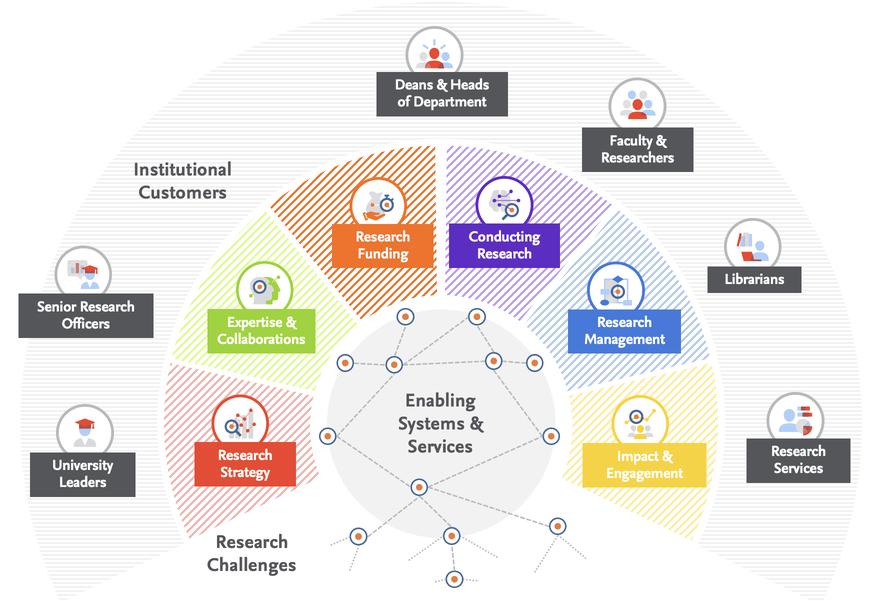What is a research information management system (RIMS), also known as a CRIS?
Research Information Management Systems are commonly referred to by a few names and acronyms, including RIMS, Current Research Information Systems or CRIS. These systems increase the efficiency and effectiveness of research information management activities by integrating and linking the various elements and processes that comprise the research ecosystem. They also centrally store related data for analysis, reporting, and research promotion activities.
Learn more about Pure – Elsevier’s RIMS
What is research information management?
To understand the tools that help research information management, let’s quickly review what it is.
According to OCLC:
Does this sound simple? Given the complexity and the challenges in the research ecosystem, managing data created during just one research project alone is challenging. Managing research data across your university without a system is impractical, if not impossible.
Research challenges and stakeholders illustrate the need for a solution to provide metadata connections and systems interoperability to report and understand university research fully.
Who are the RIMS stakeholders?

Multiple stakeholders are involved in each part of the research ecosystem and with each research challenge. When good quality data and research management is available, stakeholders can use it to help improve their contributions to the university and beyond.
These are some categories of stakeholders.
Decision-makersIncludes institutional leaders that use research information data to make strategic decisions on internal funding allocations, staffing, facilities, equipment, public relations, and internal policies that govern workflows related to research.
EnablersIncludes the libraries and research management offices that provide critical support for the management of research.
SupportersInternal departments or teams that contribute to research information management. These include:
ResearchersIncludes individuals involved in research execution, publication, and promotion:
External stakeholdersIncludes funding bodies, government or commercial partners who have an interest in the research. It also can consist of members of communities either being studied or impacted by the research and results.
How does a RIMS work?
Research information management systems work by integrating and linking the various elements and creating interoperability between solutions in the research ecosystem.
RIMS centrally stores related data for:
In turn, having this centrally located data and interface helps drive:
Research and metadata
The items generated from research can fall into three broad categories – research outputs, impact measures and related documents.
Linking all these things together with their metadata in an interoperable system enables the benefits of RIMS. Significantly, by sharing metadata, reporting and management are simplified.









